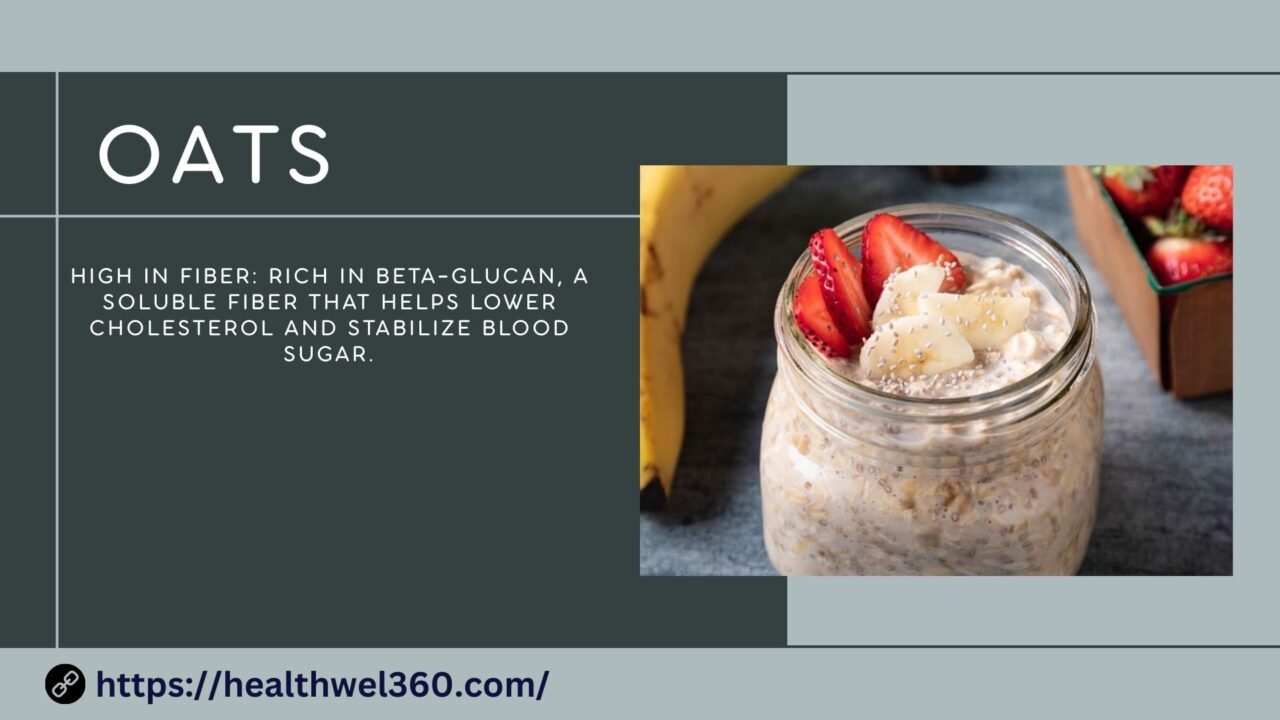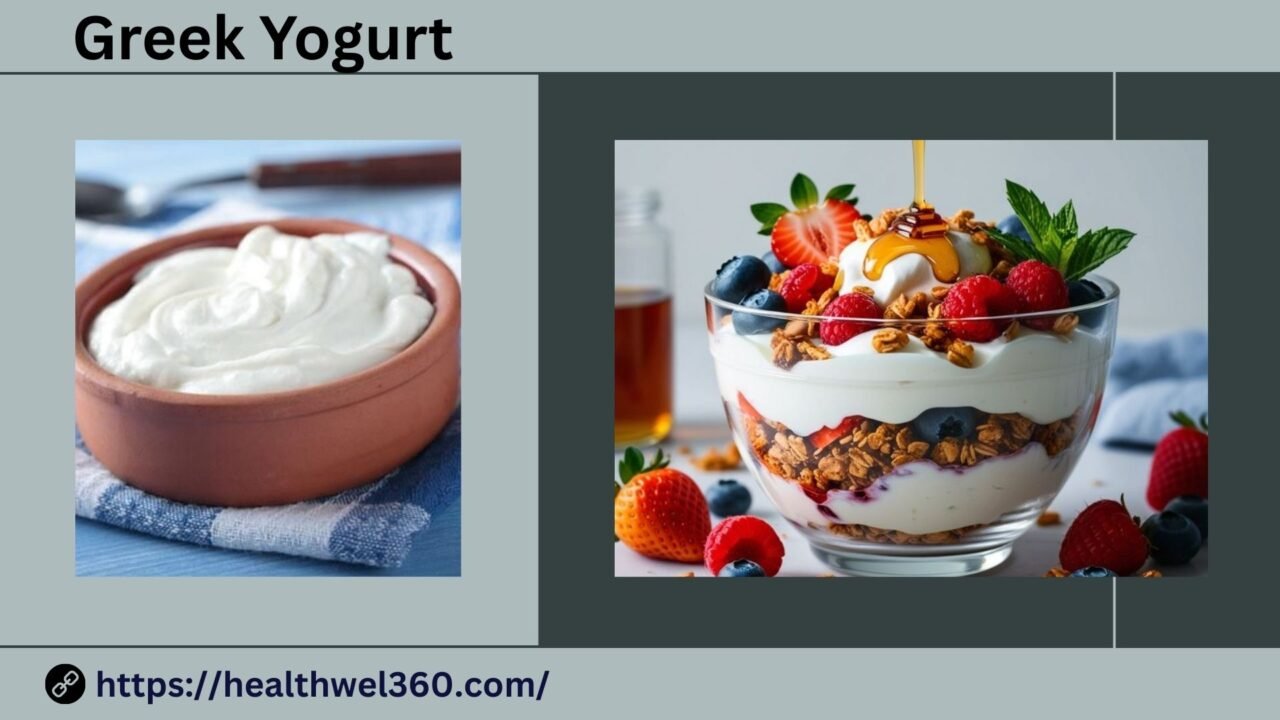
5 Traits with Surprisingly Low Calorie Fruits – Healthy & Satisfying Picks!Discover 13 treats with surprisingly few calories but a lot of taste and nutrients, perfect for a healthy and balanced diet.
There are various low-calorie meals that may help you lose weight. If you want to reduce weight while staying full, consider adding oats, Greek yoghurt, and other high-protein, high-fibre meals.
Calorie restriction might be one of the most challenging diet changes to undertake. Many Traits with Surprisingly Low Calorie Fruits might leave you feeling hungry and dissatisfied in between meals.
However, there are plenty of nutritious foods available that are both filling and low in calories. Here are 13 low-calorie dishes that are surprisingly filling.
1) Oats:

High in Fiber: Rich in beta-glucan, a soluble fiber that helps lower cholesterol and stabilize blood sugar.
Protein: Contains more protein than most grains (~5g per ½ cup dry oats).
Vitamins & Minerals: Good source of manganese, phosphorus, magnesium, iron, zinc, and B vitamins.
Antioxidants: Contains avenanthramides, which may reduce inflammation and blood pressure.
Low Glycemic Index: Helps with sustained energy and weight management.

Greek yogurt is a thick, creamy, protein-rich dairy product made by straining regular yogurt to remove whey, resulting in a denser texture and tangier taste. It’s a staple in Mediterranean diets and popular worldwide for its health benefits and versatility.
Nutritional Benefits (Per 100g, Non-Fat Plain)
Protein: ~10g (almost double regular yogurt) – great for muscle repair & satiety.
Probiotics: Contains live cultures (e.g., L. bulgaricus, S. thermophilus) for gut health.
Calcium: Supports bones and teeth (~10% DV).
Low in Carbs: ~3–4g (unsweetened), making it keto-friendly.
Low Lactose: Easier to digest for some with lactose intolerance.
Non-Fat (0% Fat): High protein, low calorie.
Low-Fat (2% Fat): Creamier but still lean.
Full-Fat (5%+ Fat): Rich, satiating, and keto-friendly.
Flavored / Sweetened: Often high in added sugar (check labels!).
Plant-Based (Dairy-Free): Made from coconut, almond, or soy (lower protein).
Health Benefits
Muscle Growth & Recovery:High protein helps repair tissues post-workout.
Gut Health: Probiotics aid digestion and boost immunity.
Bone Strength: Calcium + vitamin D (if fortified) prevent osteoporosis.
Blood Sugar Control: Low glycemic index, unlike sugary yogurts.
Weight Management: Keeps you full longer, reducing cravings.
3) Soup:

Soup is a versatile, comforting dish made by combining ingredients like vegetables, meats, grains, and legumes in a flavorful liquid (broth, stock, or water). It can be served hot or cold, smooth or chunky, and ranges from light appetizers to hearty meals.
Broth-Based (e.g., chicken noodle, miso, pho) – Light, hydrating, and easy to digest.
Consommé – Clarified, refined broth (often used in fine dining).
Creamy/Thick Soups
Puréed (e.g., tomato bisque, butternut squash) – Blended for smooth texture.
Cream-Based (e.g., clam chowder, mushroom soup) – Uses dairy or roux (butter + flour).
Hearty/Chunky Soups
Stews (e.g., beef stew, gumbo) – Thicker, with slow-cooked meats/veg.
Legume-Based (e.g., lentil, minestrone) – High in fiber and plant protein.
Cold Soups
Gazpacho (Spaish tomato-cucumber soup).
Vichyssoise (French leek and potato soup served chilled).
Health Benefits
Hydration: Broth-based soups help maintain fluid balance.
Nutrient-Dense: Packed with veggies, lean proteins, and fiber.
Digestive Health: Easy on the stomach, especially when sick (e.g., chicken soup for colds).
Weight Management: Low-calorie options keep you full longer.
Immunity Boost: Bone broth contains collagen, minerals, and amino acids.
How to Make Soup
Basic Steps
Sauté Aromatics (onions, garlic, celery, carrots) in oil or butter.
Add Liquid (broth, water, or coconut milk).
Simmer Ingredients (vegetables, meats, grains, or legumes).
Season (salt, herbs, spices).
Blend (if creamy) or leave chunky.
Pro Tips
Flavor Boosters: Parmesan rind, bay leaves, soy sauce, or lemon juice.
Thickeners: Cornstarch, flour, puréed beans, or potatoes.
Garnishes: Fresh herbs, croutons, yogurt, or grated cheese.
Popular Global Soups
Italian: Minestrone, Pasta e Fagioli.
Asian: Ramen, Tom Yum (Thai), Hot & Sour (Chinese).
Latin American: Pozole (Mexico), Sopa de Lima (Peru).
Middle Eastern: Lentil soup, Harira (Morocco).
Potential Downsides
High Sodium: Canned/restaurant soups often contain excess salt (opt for low-sodium or homemade).
Cream-Based Calories: Some creamy soups are high in saturated fat.
Allergens: Common triggers include dairy, gluten (in noodles), or shellfish.
4) Berries:

Berries are small, juicy, brightly colored fruits packed with antioxidants, vitamins, and fiber. Though botanically some (like strawberries) aren’t true berries, they’re all nutrition powerhouses.
Popular Types of Berries
Strawberries – High in vitamin C, footplate, and heart-healthy Polyphemus.
Blueberries – Famous for antioxidants (anthologists) that support brain health.
Raspberries – Rich in fiber (8g per cup) and ellagic acid (anti-cancer properties).
Blackberries – Loaded with vitamin K and manganese for bone health.
Cranberries – Known for UTI prevention (proanthocyanidins stop bacteria adhesion).
Goji Berries – Dried, high in vitamin A and zeaxanthin (eye health).
Acai Berries – Amazonian superfood, often in bowls/smoothies for antioxidants.
(Bonus: Less common – elderberries, boysenberries, mulberries!)
Nutritional Benefits (Per 1 Cup Serving)
Low-Calorie: Most berries have 50–85 calories per cup.
High Fiber: Aids digestion and blood sugar control (e.g., raspberries = 8g fiber).
Vitamin C: Boosts immunity (1 cup strawberries = 150% DV).
Antioxidants: Fight inflammation and oxidative stress (blueberries rank #1 among fruits).
Low Hypoglycemic Index: Safe for diabetics (won’t spike blood sugar).
Health Benefits
Heart Health: Improve cholesterol and blood pressure (thanks to flavonoids).
Brain Protection: May delay cognitive decline (studies link blueberries to memory boost).
Cancer Prevention: Ellagic acid (in raspberries) and resveratrol (in blueberries) show anti-tumor effects.
Skin Health: Vitamin C + antioxidants combat wrinkles and UV damage.
How to Eat Berries
Fresh: Snack on them raw or add to yogurt, salads, or oatmeal.
Frozen: Perfect for smoothies or baking (often cheaper and just as nutritious).
Dried: Like cranberries or goji berries (watch for added sugar).
Cooked: In jams, pies, or sauces (but heat can reduce vitamin C).
Fermented: Try berry kombucha or shrubs (drinking vinegar).
5)Eggs

Eggs are one of nature’s most nutritious and versatile foods, packed with high-quality protein, healthy fats, and essential vitamins. Whether scrambled, boiled, poached, or baked, they’re a staple in diets worldwide.
Nutritional Profile (1 Large Egg, ~50g)
Calories: ~70
Protein: 6g (complete protein, with all 9 essential amino acids)
Fats: 5g (including 1.5g saturated, 2g monounsaturated, and omega-3s in enriched eggs)
Cholesterol: ~185mg (mostly in yolk)
Vitamins & Minerals:
Vitamin B12 (energy, nerve function)
Choline (brain health, fetal development)
Vitamin D (bone health, immunity – in yolks)
Selenium (antioxidant)
Lutein & Zeaxanthin (eye health)
(Note: Brown vs. white eggs have no nutritional difference—color depends on the hen’s breed!)
Health Benefits
Muscle Building & Repair: High biological value protein (best for muscle synthesis).
Brain Health: Choline supports memory and cognitive function.
Eye Protection: Lutein/zeaxanthin reduce macular degeneration risk.
Weight Management: Keeps you full longer (high satiety index).
Heart Health: Despite cholesterol, most people’s blood cholesterol isn’t significantly affected
(current research shows dietary cholesterol has less impact than saturated/trans fats).
Types of Eggs
Conventional: Standard supermarket eggs (cage-raised hens).
Free-Range: Hens have outdoor access (slightly higher omega-3s).
Pasture-Raised: Highest in omega-3s/vitamins (hens roam freely).
Omega-3 Enriched: Fed flaxseed/algae for extra omega-3s.
Organic: No antibiotics/GMOs, feed must be organic.
Vegetarian-Fed: Hens eat plant-based feed (no animal byproducts).
How to Cook Eggs
Soft/Hard-Boiled: Perfect for snacks or salads.
Scrambled: Quick breakfast (add cheese/veggies).
Poached: Elegant, no added fat (great for eggs Benedict).
Fried: Sunny-side up or over-easy (use healthy oils like olive or avocado).
Omelet: Fold in veggies, cheese, or meats.
Baked: Shakshuka or frittatas for crowds.
Pro Tip: Overcooking can reduce nutrients—soft-boiled or poached preserves more vitamins!
Egg Safety & Myths
Salmonella Risk: Rare (1 in 20,000 eggs); cook thoroughly if immune-compromised.
Raw Eggs: Used in mayo/desserts (pasteurized eggs safer for raw consumption).
Yolk vs. White: Yolks contain most nutrients (don’t skip them unless medically advised).
Cholesterol Debate: Healthy people can eat 1–3 eggs daily; those with diabetes/heart disease may limit yolks (consult a doctor).




